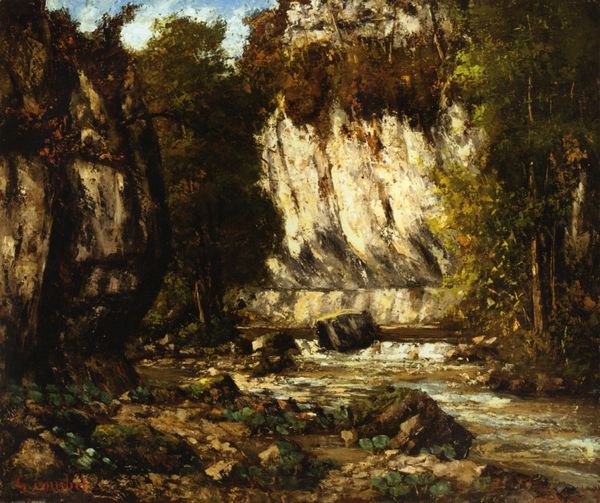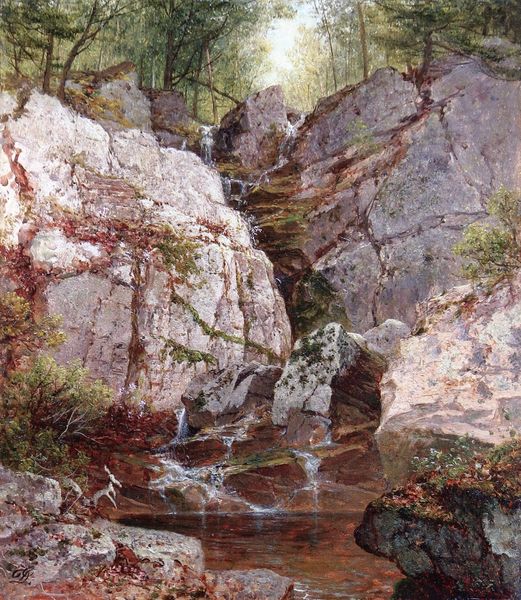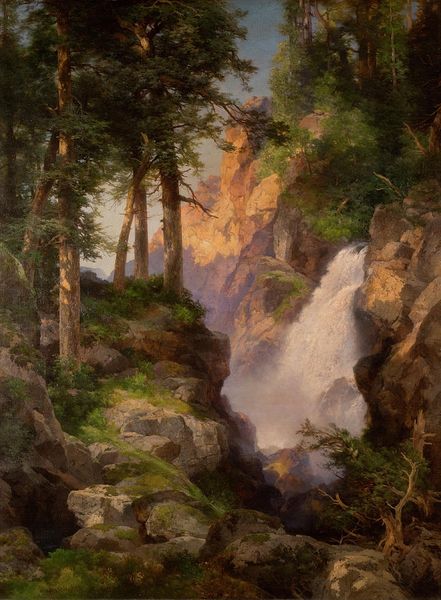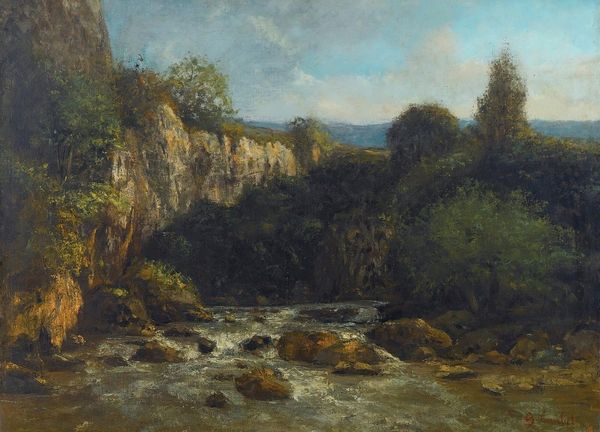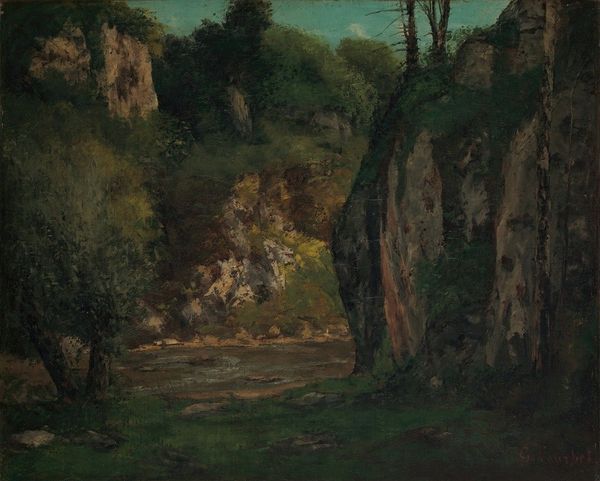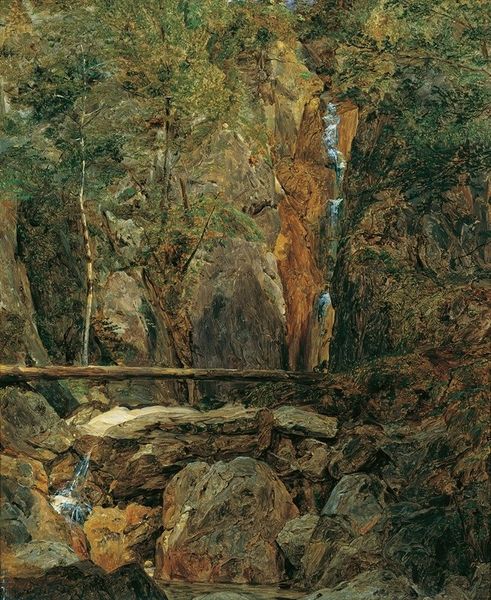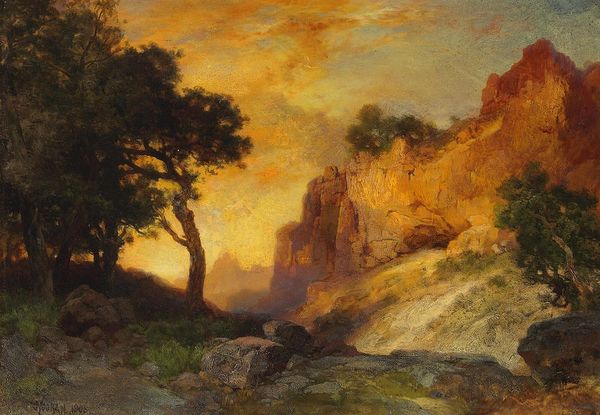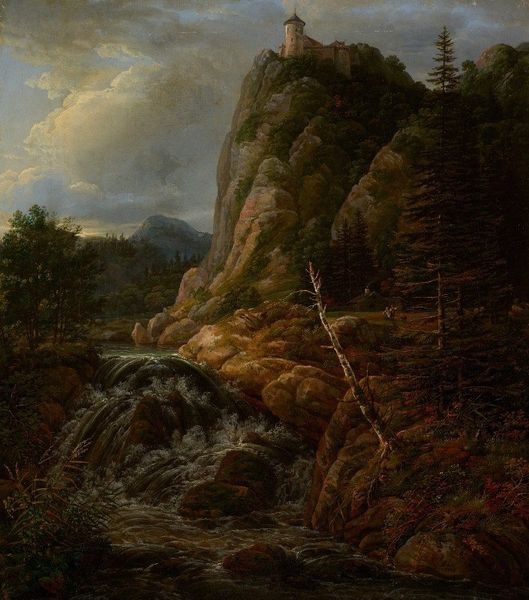
Copyright: Public Domain: Artvee
Curator: Carl Spitzweg's oil painting, “Felsenkessel mit Wildwasser,” which translates to “Rock Kettle with Wild Water,” created around 1840, is a prime example of Romantic-era landscape painting. It plunges us into the heart of untamed nature. Editor: My first impression is one of awe and quiet dread. The scale is deceptive; you think "peaceful stream," then realize the immense, brooding rocks are pressing in. Curator: Precisely. It reflects the Romantic ideal. Nature is beautiful, yes, but also overwhelming and capable of great power. Notice how Spitzweg uses light to create drama. The small cascade is brightly illuminated, a focal point, while the rest is cloaked in shadow. It’s visually arresting, designed to evoke a feeling of sublimity. Editor: Sublimity, perhaps. The way the water vanishes into the depths suggests both hope and the unknown, but I also see something of the rising tide of German nationalism at that time. Spitzweg was deeply embedded in the culture and a painter for the middle class. There’s a yearning for authentic Germanness that pulses beneath its idyllic surface. Curator: A compelling point. One must also think about how he used established motifs in the genre and his choice to paint this subject during a specific moment. Remember how often artists throughout Europe used nature to create metaphors and reinforce their contemporary viewpoints. Look, even the kettle-like form itself becomes a symbolic vessel, doesn't it? A container of potent natural forces and, perhaps, national identity. Editor: Exactly. The “Wild Water” itself—free, untamed, potentially destructive. It mirrored societal undercurrents. I see the appeal. Nature can be refuge but also represent dangerous, chaotic energy which could spill over into the political landscape. Also Spitzweg's commitment to realism here—painting what he observed—created its own kind of visual truth. Curator: Ultimately, it’s about the experience of the viewer. How does the painting speak to you? What emotional connections are forged as we contemplate its depths? And consider too, how our current socio-political environment changes those interpretations across time. Editor: Indeed, the constant shifting sands of meaning are part of what makes encountering art such an essential part of our shared experience. Curator: Absolutely. A landscape painted nearly two centuries ago still offers new insights.
Comments
No comments
Be the first to comment and join the conversation on the ultimate creative platform.


